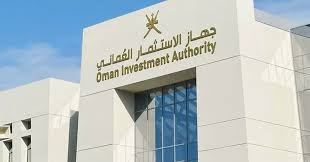How the Omani fund has risen among the top ten performers in the world
The Oman Investment Authority (OIA), the Sultanate’s financial arm, has quietly established itself as one of the top ten sovereign wealth funds in the world, according to the 2025 ranking by Global SWF. With a net profit of $4.1 billion in 2024 and over $53 billion in assets under management, the OIA has become a strategic player in Oman’s budget stability and economic transformation.
Under the direct authority of the government, the OIA has strengthened its governance and transparency, receiving praise from the World Bank. This rigor has helped reposition Oman in the “investment grade” category and establish the fund’s credibility in international markets.
Its strategy is based on a tripartite architecture:
- The National Development Fund (NDF), focused on priority domestic projects (energy, logistics, mining, telecoms).
- The Future Generations Fund (FGF), focused on innovative international investments (AI, health, fintech, energy transition).
- The Future Fund Oman (FFO), a lever for attracting foreign investors and supporting national champions.
Concrete results: diversification and returns
In 2024, the NDF exceeded its targets, investing $4.9 billion in critical infrastructure, including funding for 500 MW solar power plants and the development of the Duqm port. Nearly 68% of the funds were directed towards energy. Meanwhile, the FGF focused on future global sectors, with 13 new funds in its portfolio. Notably, the OIA is one of the leading investors in xAI, the artificial intelligence startup founded by Elon Musk, demonstrating its integration into the global tech scene. Launched in January 2024, the FFO ($5.2 billion) has already committed $865 million to flagship projects such as the Sohar polysilicon plant – soon to be the largest in the world outside of China – and co-investments in electric vehicle value chains and green technologies.
2024 also marked a turning point in liability management: OIA portfolio companies repaid $4.7 billion in debts, including $1.4 billion in early payment by the OQ group. Sovereign guarantees fell to $4.7 billion, half of the amount in 2023. At the same time, the OIA revitalized the local market with the sale of six assets (including a 25% IPO of OQ Exploration & Production), encouraging private investment and citizen participation. Omani SMEs are also supported, representing nearly 20% of the OIA’s supply chain, backed by $28 million in direct financing and targeted procurement policies.
Present in more than 50 countries, the OIA portfolio remains 63% focused on the national territory. This positioning illustrates its dual ambition: strengthening Oman’s economic resilience while capturing global trends through investments in tech, digital infrastructure, and critical minerals.
By hosting the largest gathering of sovereign wealth funds in Muscat in 2024, the OIA confirmed its international stature. At the intersection of the Sultanate’s economic ambitions and global dynamics, it now emerges as a hybrid model of sovereign management, combining returns, innovation, and sustainable development.


